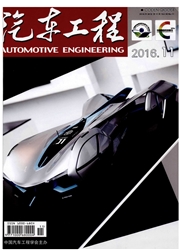

 中文摘要:
中文摘要:
依据国际标准ISO2631和国标GB/T4970《汽车平顺性随机输入行驶试验方法》,对某客车进行了行驶平顺性试验,重点研究了不同算法在平顺性分析中的差别。以FAMOS、VC&MATLAB为软件开发平台,在Parse-val定理基础上实现了时、频域两种算法。结果表明,各种算法计算结果差别不大但各有特点,时域法对峰值系数更加敏感,可用于从人体舒适性角度评价平顺性;频域法则适用于分析1/3倍频程各频带对人体振动的影响并为改善汽车平顺性提供依据,但存在精度较低、处理效率不高等问题。而频率法中两种谱估计法的对比结果表明,Welch经典谱估计法的一致性较差,而采用AR模型的Yule Walker估计法性能相对稳定。
 英文摘要:
英文摘要:
Based on international standard ISO2631 and national standard GB/T4970 Method of random input running test-Automotive ride comfort,the ride comfort tests are conducted on a bus with a study focused on the applicability discrepancy between different algorithms in ride comfort analysis.By applying Parseval theorem,both time and frequency domain algorithms are implemented with FAMOS and VCMATLAB software development platforms.The results show that the outcomes of calculation with different algorithms don't have significant differences,but each algorithm has its own distinguishing feature.The time domain algorithm is more sensitive to peak factor and can be used to evaluate the ride comfort of vehicle from the perspective of human body comfort,while the frequency domain algorithm is suitable for analyzing the influence of each frequency of one-third octave band on human body vibration and providing bases for ride comfort improvement,but with the defects in lower accuracy and processing efficiency.And in frequency domain,the results of comparison between two spectrum estimation schemes indicate that the Welch classic spectrum estimation technique has poor consistency while the Yule-Walker method using AR model has relatively stable performance.
 同期刊论文项目
同期刊论文项目
 同项目期刊论文
同项目期刊论文
 期刊信息
期刊信息
